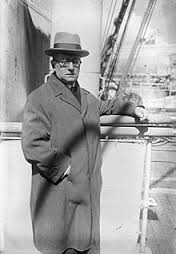
Yesterday marked the anniversary of the birth of influential Hungarian-born violinist and pedagogue Carl Flesch (1873-1944). As a teacher, Flesch produced some of the twentieth century’s most notable violinists, including Henryk Szeryng, Ginette Neveu, Josef Hassid, Ivry Gitlis, and Ida Haendel. His book, Art of Violin Playing and his Scale System are still used today.
Boris Schwartz, a student of Flesch and the author of Great Masters of the Violin, writes:
His dominant quality seemed German, marked by a classical approach to music based on scholarly study, purity of style devoid of showmanship, a sturdy sense of rhythm tending toward slow tempos, and a deliberate objectivity of interpretation.
Schwartz stresses that Flesch’s approach to playing and teaching was deeply intellectual, often at the expense of “emotion” and “impulse”. “Use your head for your technique and your heart for your music” was one of Flesch’s mottos. He modernized violin technique, helping students to analyze their own problems and develop solutions. A master of well-thought-out fingerings, Flesch collected and catalogued possible fingerings for various passages in the violin repertoire.
In the final years of his life, Carl Flesch fled the Nazis, and settled eventually in Switzerland. In 1931, following the stock market crash of 1929, Flesch was forced to sell his 1725 “Brancaccio” Stradivarius. He replaced the Strad with a fine Petrus Guarnerius violin.
Here is Flesch playing Paganini’s Caprice No. 20. The piano accompaniment was written by Polish pianist Ignace Strasfogel:
Here is a singing, Romantic 1936 performance of Handel’s Violin Sonata in A major:
Flesch called the Beethoven Violin Concerto,
One of the most difficult works because it is built on introspection. The first movement consists almost entirely of embellishments, of passing notes into which one must put expression and life. Most of the time one hears it played like an etude-there are not three or four violinists in existence who play it well.
Here is his 1943 recording with the Lucern Orchestra:
https://www.youtube.com/watch?v=ycefKpeo7dM
Here is Jota by the Spanish composer Manuel de Falla:
